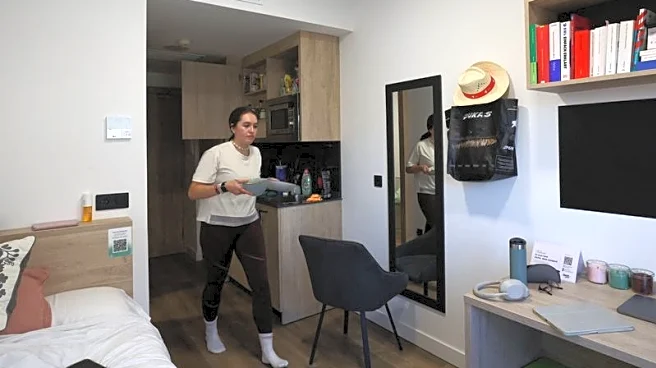What's Happening?
According to a recent report from Zumper, rental prices across the United States have either remained stable or decreased for the third consecutive month. In September 2025, the median price for a one-bedroom rental held steady at $1,517, while the cost of a two-bedroom unit saw a slight decrease of 0.2% to $1,894. Overall, rental prices have fallen by 1% compared to the previous year. This trend marks a significant shift from the first half of 2023, when inflation caused rental prices to surge by as much as 8% year-over-year. The report attributes the current downward trend to a sluggish labor market, economic concerns, and an oversupply of apartments following last year's construction boom.
Why It's Important?
The stabilization and decline in rental prices provide much-needed relief to renters who have been facing financial pressures due to rising living costs. This trend contrasts sharply with the housing market, where median home prices have continued to rise, reaching $422,600 in September. The decrease in rental prices may encourage more individuals to opt for renting rather than buying, especially in uncertain economic times. Additionally, the surplus in apartment supply could lead to more competitive rental markets, potentially benefiting renters with better deals and options.
What's Next?
Housing expert Crystal Chen, co-author of the Zumper report, anticipates that the cooling trend in rental prices will persist at least through the winter. This continued stabilization could further ease financial burdens on renters and influence housing market dynamics. Stakeholders such as landlords and property developers may need to adjust their strategies to accommodate the changing rental landscape, potentially focusing on enhancing property amenities or offering incentives to attract tenants.
Beyond the Headlines
The current rental market trend may have broader implications for urban planning and development. As rental prices stabilize, cities might experience shifts in population density and housing demand, influencing infrastructure and community services. Additionally, the economic factors driving rental price changes could prompt discussions on housing affordability and policy measures to support renters in the long term.











